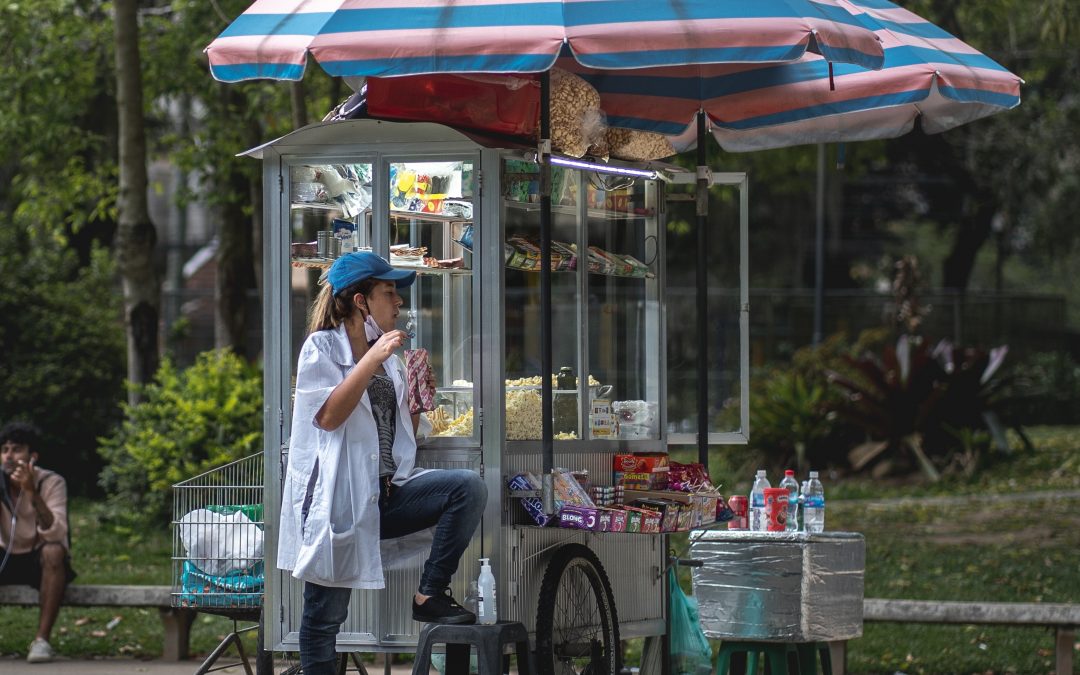Gindo Tampubolon, Lecturer in Poverty, Global Development Institute
Brazil tops the rank of Covid-19 deaths in Latin America due, in no small measure, to the government’s response to the pandemic. The president dallies while the toll tallies. On the other side of the region, Chile, responded with some rigour. Sharing no borders with Brazil, Chile shared no hesitation in vaccinating her population at first opportunity. How does the region of Latin American fare in the aftermath of the initial wave of the pandemic?
Data
Following my earlier blog on the experience of Uganda across the South Atlantic, I ask similar questions, and answer them using international high-frequency Covid-19 surveys ran in 13 Latin American countries: Chile, Peru, Argentina, Colombia, Guatemala, El Salvador, Honduras, Costa Rica, Mexico, Bolivia, Ecuador, Paraguay and the Dominican Republic. I used Chile as a base given her notable response.
Again, the outcomes are food insecurity and foregone care. Food insecurity is any affirmation to four questions from the Food & Agricultural Organisation’s Food Insecurity Experience Scale viz. being hungry, running out of food, skipping a meal, going without food the whole day in the last month. Foregone care is when health care is needed (visit to doctor or drugs to be taken) but foregone in the last week. Age, sex and education (higher than secondary school or not) of adults were recorded and so were information indicating their economic status i.e. number of rooms in the house, owning cable TV or cellular wifi or broadband internet. Whether they have received any government transfer (cash or in-kind) was important and recorded.
The interest is in the probabilities of experiencing food insecurity and of foregoing healthcare in the time of pandemic across these countries. Given the similarity in all high-frequency Covid-19 surveys, I used the same dynamic probit model to estimate these probabilities and their differences across countries.
Results
There were more than 13,000 adults surveyed repeatedly, up to three rounds, from May to August 2020, ranging from 715 in Paraguay to 2109 in Mexico, giving 31,628 observations over the four months. Figure 1 shows the proportions of people being food insecure across Latin America, for men and women over the three rounds, starting from Chile (the base, top-left) followed alphabetically by other countries. The proportions in Chile are among the lowest in the region and across round, comparable to those in Mexico. The high proportions are found in Ecuador and Colombia. Throughout the region, women went hungry more often than men.
Figure 1. Food insecurity across Latin America over three rounds of high-frequency Covid-19 surveys, by women (F) and men (M).
The picture for foregone care is shown in figure 2. There are notable contrasts in comparison with food insecurity. First, the scale of the proportions is smaller (the scale of the horizontal axis). Then, Chile stuttered in the first round but quickly caught up with the rest of the region. Among those with high proportions foregoing care, Ecuador and Peru stand out. Importantly, women didn’t always dominate in foregoing care in all rounds and in all countries, unlike their experiencing of food insecurity.
Figure 2. Foregone care across Latin America over three rounds of high-frequency Covid-19 surveys, by women (F) and men (M).
Of course, countries differ in their levels of economic development and in their health systems, and these shape the probabilities of experiencing food insecurity and of going without health care during this pandemic. To account for all that, the dynamic probit models explain these probabilities in terms of country random effects (capturing economic development and health system) and personal attributes including age, sex, education, owning assets and whether or not receiving any transfer from the government. The coefficient results for food insecurity are shown in figure 3.
Figure 3. Coefficients of dynamic probit model of experiencing food insecurity during the pandemic across Latin America over three rounds of high-frequency Covid-19 surveys (Chile as base).
Some echoes of figure 1 and new results are evident here. Education and assets do matter: owning cable TV, wifi or broadband internet as well as more bedrooms, all indicating higher economic position, are associated with lower probabilities of going without food. Echoing the findings above, women experience more food insecurity, significantly so. Everything else equal, Bolivia, Colombia, Costa Rica, Ecuador, Honduras, Peru and Rep. Dominicana report higher probabilities of food insecurity. Government transfer, though negatively associated with food insecurity, is not significant.
The picture of foregone care across the region, for men and women over three rounds presented above, is somewhat complex. How is it when more information such as assets ownership is considered? Figure 4 shows the results. Assets, education and sex are three variables that retain similar associations: assets do matter and women forego care more often. But that said, there is not much difference across the countries in shaping the experience of getting care or not during the pandemic; all country coefficients are no different from that of Chile.
Figure 4. Coefficients of dynamic probit model of foregoing healthcare during the pandemic across Latin America over three rounds of high-frequency Covid-19 surveys (Chile as base).
Food insecurity and foregone care in the time of pandemic tell different stories across Latin America. Social inequalities (structured by gender, education and assets) shape them both, but there are more fundamental drivers of food security that tell stories of hunger from stories of security. Chile and Brazil, which share no borders, nevertheless may need to share lessons from each other and from the rest of the region to ensure wellbeing in the time of the coronavirus pandemic.
Image from Petrópolis – RJ, Brasil by Mauro Lima on Unsplash
Note: This article gives the views of the author/academic featured and does not represent the views of the Global Development Institute as a whole.





